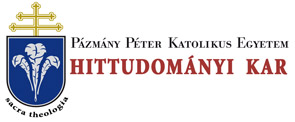Folia Theologica et Canonica, Supplementum (2016)
Szabolcs Anzelm Szijromi, O.Praem., Relationship among the Holy See, Czech-, Polish-and Hungarian Kingdoms in the 13"'-14" century
200 SZABOLCS ANZELM SZUROMI the Promise of Speyer (1209) signed by Otto IV ( 1198-1218).5 Later on, Emperor Frederick II (1212-1250) took an oath to abide by these documents. Therefore, the concrete steps to ensure more deeply the autonomy of spiritual authority and, thereby, to bring about the freedom of the Church’s proper activities from the influence of secular powers had become close.6 The Central- European Kingdoms of Latin Christianity (Czech, Polish, and Hungarian) had become strategic partners to improve this balance.7 Therefore, it is not accidental that Walter Ullmann (f 1983) and Charles Duggan (t 1999), summarizing the general opinion of ecclesiastical historians, called the Lateran Council IV (1215) the most important medieval council before Trent (1545-1563).8 During the 13th and Id16 centuries had been convoked four general councils, which had made extraordinary influence on the daily life of the Church in that very time when the Gnostic-Manichean or dualist religious concepts (e.g., the Bogomi- lism)9 appeared in Europe, moreover the Mongolian invasion had attacked the Eastern border of the continent. These councils are Lateran IV (1215), Lyon I (1245), Lyon II (1274), and the Council of Vienne (1311-1312).10 * * * * * Every single one had made fundamental effect on the particular- and local councils, especially in the central territory of Europe - the East border of Western Christianity - means in the Czech, Polish, and Hungarian Kingdoms. Poland and Hungary belonged to the same region in the Middle Ages, based on the Papal 5 (...) Illum igitur abolere volentes abusum, quem interdum quidam predecessorum nostrorum exercuisse dicuntur in electione prelarorum, concedimus et sanctimus, ut electiones prelatorum libere ac canonice fiant, quatinus ille prefitiatur ecclesie viduate quem totum capitulum vel maior et sanior pars ipsius duxerit eligendum, dum modo nichil ei obstet de canonicis institutis. Appellationes autem in negociis et causis ecclesiasticis ad apostolicam sedem libere fiant eorumque prosecutionem sive processum nullusimpedire presumat. Illum quoque dimittimus et refutamus abusum, quem in occupandis bonis decedentium prelatorum aut etiam ecclesiarum vacantium nostri consueverunt antecessores committere pro motu proprie voluntatis. Omnia vero spiritualia vobis et aliis ecclesiarum prelatis relinquimus libere disponenda, ut que sunt cesaris cesari et que sunt Dei Deo recta distributione reddantur (...). Mercati, A. (ed.), Raccolta di concordati su materie ecclesiastiche tra la Santa Sede e le autorità civili, Roma 1919. 38. 6 Llorca, B. - García Villoslada, R. - Laboa, J. M., Historia de la Iglesia Católica (Biblioteca de autores cristianos 104), II. Madrid 1999. 485. 7 Waldmüller, E., Die Synoden in Dalmatien, Kroatien und Ungam Von der Völkerwanderung his zum Ende Árpádén (1311) [Konzilengeschichte, Reihe A], Paderborn-München-Wien- Zürich 1987. * Duggan, Ch., Lateran Councils, in New Catholic Enciclopedia, Vili. New York 1967. 407. Ullmann, W., A Short History of the Papacy in the Middle Ages, 221. ’ Cf. Puech, H. Ch., Catharisme módiéval et bogumilisme, in Sur le manichéisme et autres essais, Paris 1979. 395-472. Thouzellier, Ch., Hérésies et hérétlques, Roma 1969. 189-203, 223-262. 10 Recently Szuromi, Sz. A., The Importance of the Decrees of the Council of Vienne ( 1311-1312) from a Theological, Canonical, and Historical Perspective, in Rivista intemazionale di diritto comune 25 (2014) 297-314. Cf. Miethke, J., Via concilii. I decreto Haec sancta e il conciliarismo del concilio di Costanza, in Christianismo nella storia 37 (2016) 55-86, especially 60-64. Grohe, J., En IV concilio de Laterán en la historia de la Iglesia y en historia de los concilios, in Álvarez de las Asturias, N. (ed.), El IV concilio de Laterán en perspective histórica-teológica (Universidad San Dámaso, Presencia y diálogo 47), Madrid 2016. 17-47.
